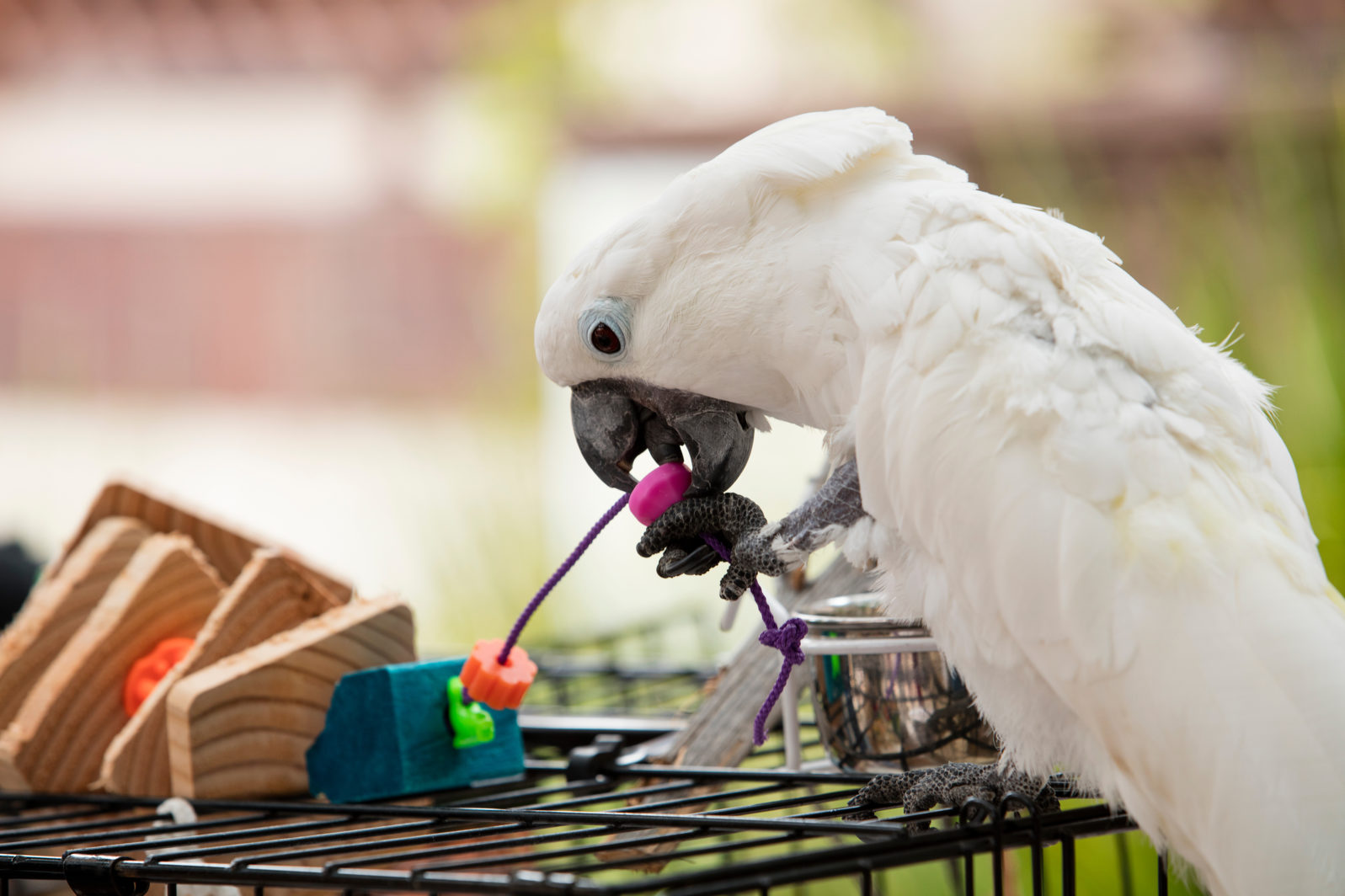The Remarkable Things We’re Learning About Bird Intelligence
These findings are only among birds that have actually been studied; most birds have not been studied for intelligenceAt one time, there was an assumption — not really a theory — that vertebrates would be more intelligent than invertebrates and mammals would be more intelligent than birds. Well along came the octopus, which turns out to be as intelligent as a typical mammal. And the New Zealand crow, which can be as smart as an ape. These life forms have significantly different brains from each other so intelligence does not appear to reside in a specific organization of the brain.
While researchers puzzle that out, let’s look at some recent findings as to what the bird (avian) brain can do. We are looking at behaviors that probably require some individual intelligence, not just an inherited program:
● Cockatoos can use tools like primate apes:
In their experiment, the team devised a game of golf for one species of bird, the Goffin’s cockatoo, which is known for its problem solving skills and its ability to use single tools such as sticks to open up nut and seed shells.
The birds had to manipulate a ball through a hole into a closed box, and then use a stick to push the ball to one side of the box where it triggers a trapdoor mechanism. This in turn releases a cashew nut for the bird.
Three of the cockatoos figured out how to use the stick to manoeuvre the ball into the right position to release the treat — showing a high level of tool innovation.
University of Birmingham, “Golfing cockatoos reveal ability to use combined tools” at ScienceDaily (February 8, 2022) The paper is open access.
Goffin’s cockatoos also whittle tree branches into knife and spoon-like utensils for piercing fruit stones. That’s all the more remarkable when we consider that chimpanzees in another study could not figure that out.
● African grey parrots have been observed to share tokens — given to them by humans — that they associated with a treat (walnuts) with other parrots by way of exchange or just helpfulness:
Parrots, it seems, don’t just have the ability to comprehend metal rings as currency for food, but they also “understand the consequences their actions can have on another individual,” says Christina Riehl, an expert in bird behavior at Princeton University who wasn’t involved in the research. “That’s pretty sophisticated reasoning.”
Katherine J. Wu, “Parrots Will Share Currency to Help Their Pals Purchase Food” at Smithsonian Magazine (January 9, 2020) The paper is open access.
Is this an instance of abstract comprehension of the concept of currency? It’s more likely a learned series of steps: Give a token, get a walnut. Or anyway, get social interaction with a neighbor. But it’s pretty complex anyway. And, the researchers say, blue-headed macaws couldn’t — or anyway didn’t — do it.
One African grey parrot, Alex (1976–2007), became famous for his ability to learn words after intense training.
● Do crows understand the concept of zero?
In fact, experiments have shown that both monkeys and honeybees know how to treat zero as a numerosity, placing it on a mental number line much as they would numerosity one or two. And in a paper published in the Journal of Neuroscience in June, researchers reported that crows can do it, too…
Recordings of the crows’ brain activity during these tasks revealed that neurons in a region of their brain called the pallium represent zero as a quantity alongside other numerosities, just as is found in the primate prefrontal cortex. “From a physiological point of view, this fits in beautifully,” Nieder said. “We see exactly the same responses, the same type of code, represented in the crow brain as in the monkey brain.”
Jordana Cepelewicz, “Animals Count and Use Zero. How Far Does Their Number Sense Go?” at Quanta (August 9, 2021) The paper is open access.
It’s not clear however, that such a finding means that the crow understands the concept of zero or of any other number. Concepts are abstractions; the arithmetic that the crow, the monkey, the bee, and many other life forms do is utilitarian. It works or it doesn’t, without abstraction. If things were otherwise, they would be able to think things humans can think — and they clearly can’t.
As neurobiologist Andreas Nieder tells Cepelewicz, he “doesn’t see a pressing need for animals to understand zero as a numerosity, since viewing it as an absence should usually suffice. ‘I don’t think that animals use numerosity zero as a quantity in their day-to-day living,’”
A smart New Zealand crow:
The main thing to see here is that problem-solving intelligence peaks among some life forms that are not at all closely related. According to Cepelewicz, crows and chimpanzees are thought to have last had a common ancestor 300 million years ago. And bees are thought to have had a common ancestor with crows and chimpanzees 600 million years ago. But crows, chimpanzees, and bees are all much more closely related to life forms that have not attracted attention for their intelligence. Are we just missing those life forms’ intelligence? Or perhaps the question of unusual intelligence in some birds and other life forms but not others is one of the fruitful mysteries of science that invites further study.
You may also wish to read: Crows can be as smart as apes. But they have quite different brains. The intelligence doesn’t seem to reside in the details of the mechanism. Studying animal intelligence has taught us many things. But in some ways, it has deepened the mystery of intelligence.
